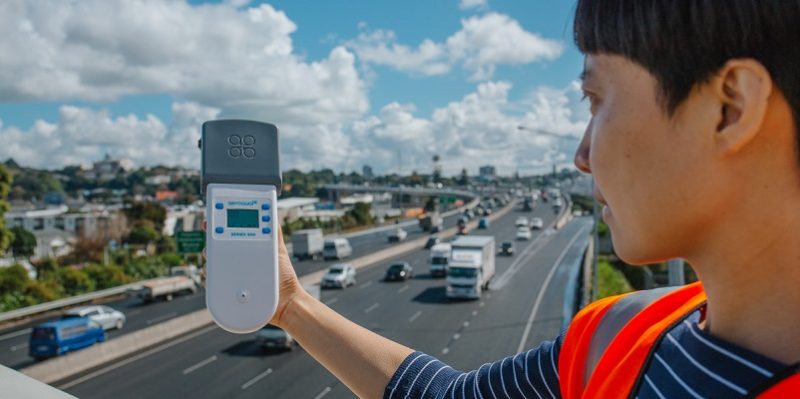NZ company helping to uberise science
A New Zealand company that is at the forefront of the global fight against air pollution is collaborating with the United States Environmental Protection Agency (EPA) to help advance the research and development of next generation air sensor technology.
A five-year Cooperative Research and Development Agreement (CRADA) was signed between the EPA and Aeroqual. The New Zealand-based company has decade long pioneering work in the development of small, low-cost portable equipment that even school children can use.
Announcing the agreement, the EPA said next generation air monitoring tools are new technological advances that are increasingly being used by researchers and citizen scientists alike to monitor and measure air quality.
EPA’s co-investigators Rachelle Duvall and Russell Long – who will work alongside Aeroqual leads Geoff Henshaw and Kyle Alberti – said the next generation tools are so much more accessible compared to the large, stationary monitors.
Duvall says the EPA will benefit from the collaboration by combining their expertise in air measurements with Aeroqual’s expertise in sensor development to advance air quality characterisation using next generation air monitoring tools.
“Because these tools are so much more accessible compared to traditional air monitoring equipment and are being used by not only the scientific community but also the general public, it is important for all users to have confidence in the data they are collecting.”
The CRADA between Aeroqual and the EPA will investigate new applications, methodologies and technologies for the low-cost measurement of outside air pollutants.
While current low-cost air sensors measure common air pollutants, like ozone (O3), nitrogen dioxide (NO2), sulphur dioxide (SO2), particulate matter (PM) (among others), the EPA is also interested in measuring other compounds including air toxics such as volatile organic compounds (VOCs) which cause adverse health effects.
Duvall said she hopes the two organisations will improve some of the many challenges that low-cost, portable air sensors bring. For one, ensuring accurate and reliable performance over time.
“This work is important because we are looking for lower cost options to accurately monitor air quality in the future and this CRADA can help achieve our goals.”
Aeroqual’s chief technical officer Dr Geoff Henshaw said that having long championed a ‘measurement first’ approach to lower cost air quality monitoring, “the U.S. EPA collaboration will allow us to go deeper, faster, and do things at a much bigger scale”.
“Rising public awareness together with rapid technology improvements has increased demand for more air quality information – localised, real-time information that is more relevant to where people live, work and play.”
The next generation air sensor technology developed by Aeroqual and other manufacturers can be deployed in greater numbers by people without previous air monitoring experience.
“It is great to be involved in research that is helping to advance emerging tech.”
As part of the CRADA, EPA and Aeroqual researchers are focusing on four areas to support the advancement of air sensor technologies:
• Sensor performance: air sensors must obtain accurate and reliable air quality measurements. Scientists aim to understand long-term performance and stability of sensors, cross interferences with other pollutants, impacts from temperature and humidity, and performance in areas with poor air quality.
• Sensor calibration: calibration provides a way to ensure that air sensors continuously provide precise measurements over time.
• Expanding and enhancing measurement capabilities: while most of the commercially available sensors target common air pollutants like O3, NO2, PM, and others, scientists are interested in the ability to measure additional air pollutants such as volatile organic compounds and other air toxics.
• Sensor applications: investigating different ways to use and apply air sensor technologies is vital to exploring how sensor designs can be optimised to improve measurements and increase usability.
Over the next four years, EPA scientists will evaluate data collected from low-cost sensors placed at EPA’s Ambient Monitoring Innovative Research Station (AIRS) in Research Triangle Park, North Carolina and as part of a number of EPA field studies. At the same time, the instrument’s design will also be evaluated.
Aeroqual will provide various air sensor technologies so that both EPA and Aeroqual can review project results and places for improvement. The team will summarise their results and prepare findings to share in print and digital form.
Aeroqual was founded in 2001 by Auckland University Professor David Williams and Dr Geoff Henshaw, to provide more cost effective, high quality air monitors that fell somewhere in between basic gas monitors and expensive gas analysers.
Aeroqual exports indoor and outdoor ozone sensors, air quality monitors and dust and particulate monitors and software – including Aeroqual Connect and Aeroqual Cloud data management tools – to more than 50 countries.



